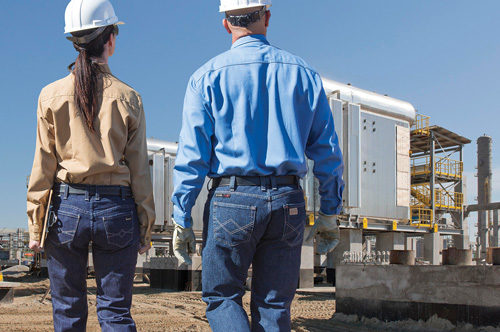Comfort innovations lead to greater FR clothing compliance
How is the comfort of FR clothing related to compliance?

Responding is Mark Saner, FR technical manager, Workrite Uniform Co., Oxnard, CA.
Simply owning a treadmill doesn’t make you fit. And simply owning flame-resistant clothing doesn’t protect you from thermal hazards. In order to reap the full safety benefits, workers need to actually wear their FR garments – and they need to wear them consistently and correctly.
The use of FR clothing is mandated in a variety of workplaces by multiple OSHA standards, including 1910.132, 1910.269 and 1910.335. Several other industry standards, such as NFPA 2112 and NFPA 70E, provide additional guidelines regarding FR clothing requirements. If employees do not wear their FR clothing in compliance with these standards, they not only increase their chance of injury from heat- and fire-related hazards, but also put their workplaces at risk of incurring fines.
Just as discomfort is a major factor in opting to stay off the treadmill, it is also a major factor in employees choosing not to wear their FR clothing compliantly. In an attempt to cool off on a hot day, workers may push up their sleeves, leaving areas of the skin exposed. Or, in an effort to escape the restricting feel of stiff fabrics or clothing designed with poor mobility, wearers may untuck or unbutton their shirts, increasing the likelihood of their garments getting caught on something and of exposing the skin to hazards. Worst of all, if FR clothing is too uncomfortable, employees may decide not to wear it at all.
Fortunately, FR clothing manufacturers have made significant improvements in comfort over the years. One of the more recent innovations is improved FR denim, which offers a casual, relaxed alternative to classic FR work pants, in styles workers will want to wear both on and off the job.
Another recent innovation is FR clothing designed specifically for women, such as pants with a lower rise and tailored shirts. By providing a better fit, these styles help increase wearer compliance.
A variety of compliance-inspiring options are now available – if you know what to look for. In general, it is best to select FR garments made from flexible, lightweight fabrics with excellent breathability and moisture management. Additionally, it is important to identify styles that will provide the best possible fit for each individual employee and seek options that support job performance by offering greater mobility.
Of course, comfort is largely subjective and preferences may vary between individual workers and/or work environments. To help identify the best fit for your needs, consider doing wear trials to experiment with various fabric and style options.
Compliance matters when it comes to safety, and selecting comfortable FR clothing can go a long way toward encouraging employees to get up on that metaphorical treadmill and wear their protective apparel properly.
Editor's note: This article represents the independent views of the author and should not be construed as a National Safety Council endorsement.
Post a comment to this article
Safety+Health welcomes comments that promote respectful dialogue. Please stay on topic. Comments that contain personal attacks, profanity or abusive language – or those aggressively promoting products or services – will be removed. We reserve the right to determine which comments violate our comment policy. (Anonymous comments are welcome; merely skip the “name” field in the comment box. An email address is required but will not be included with your comment.)

